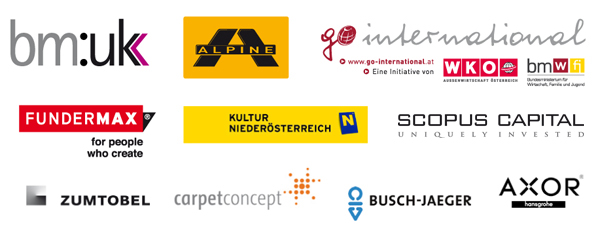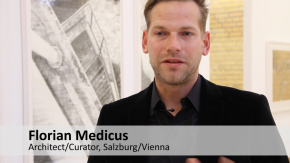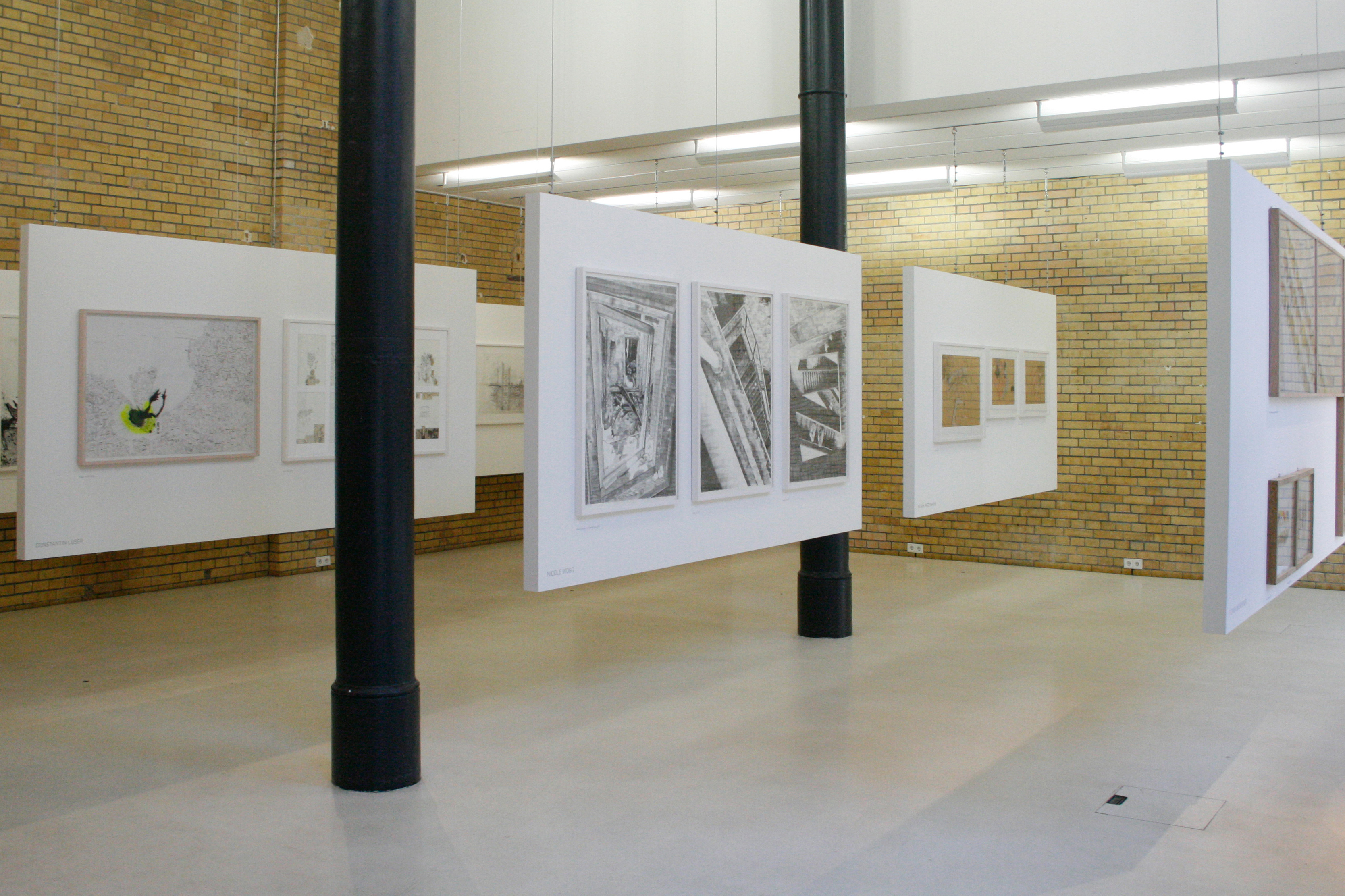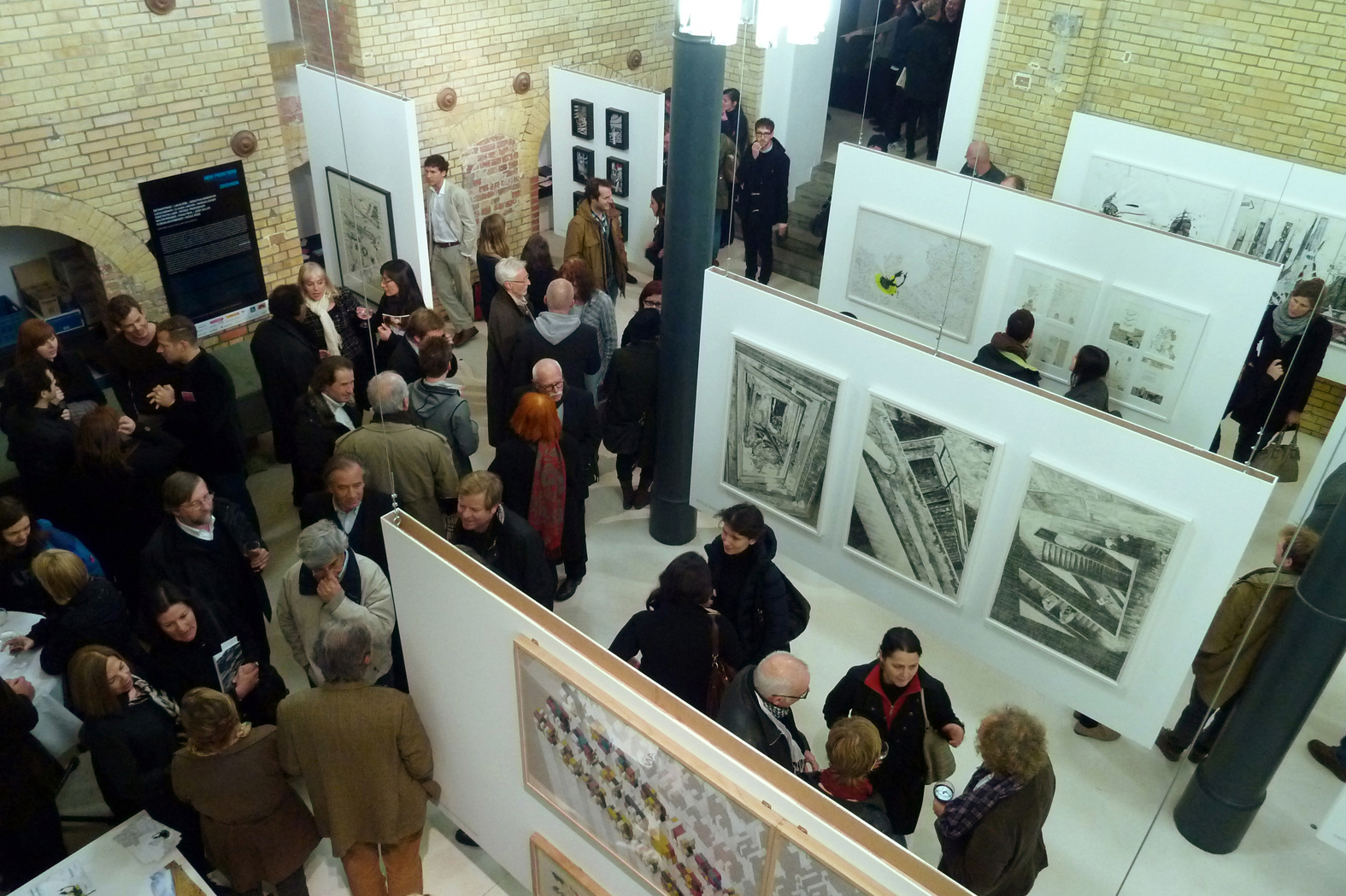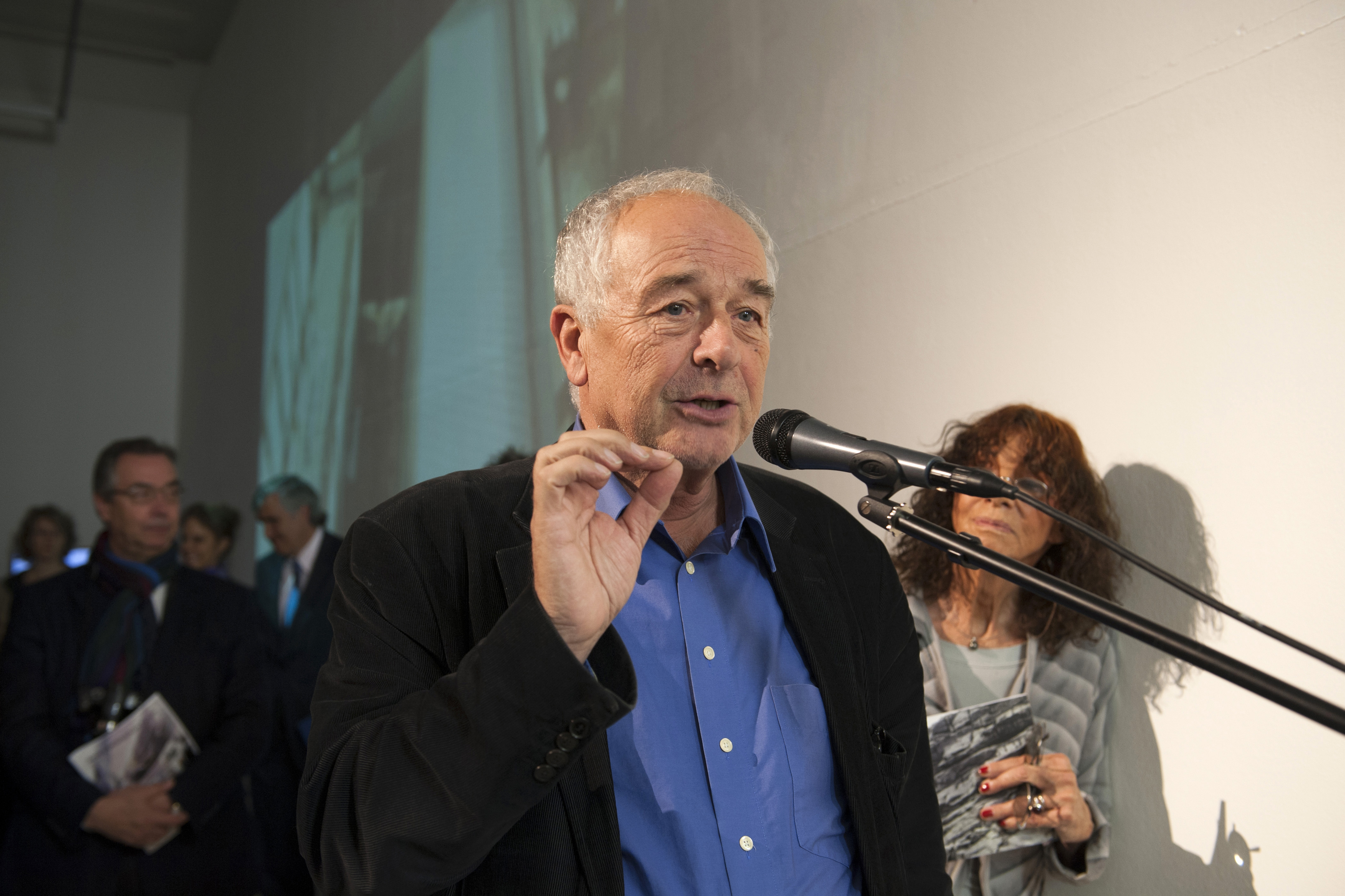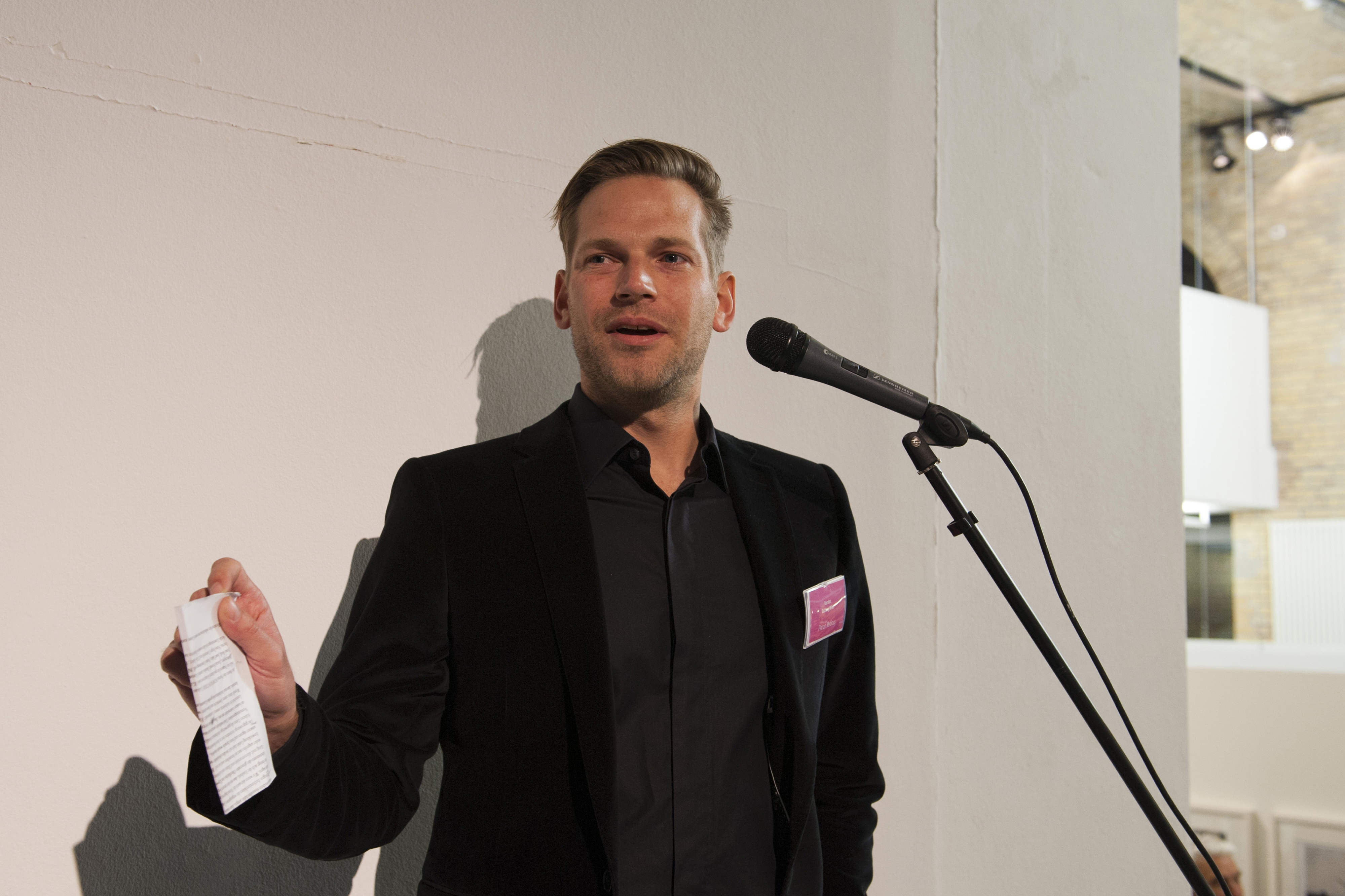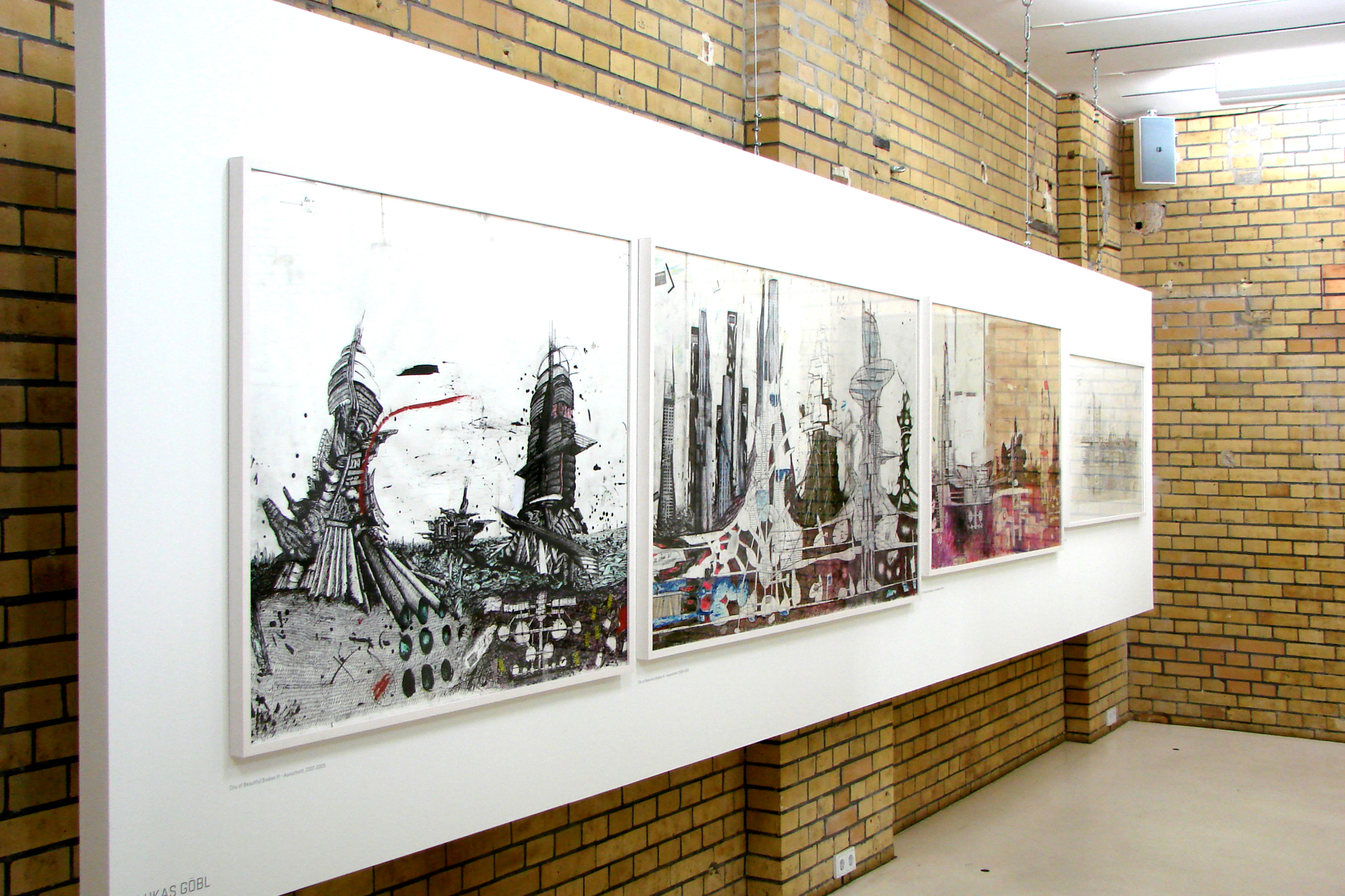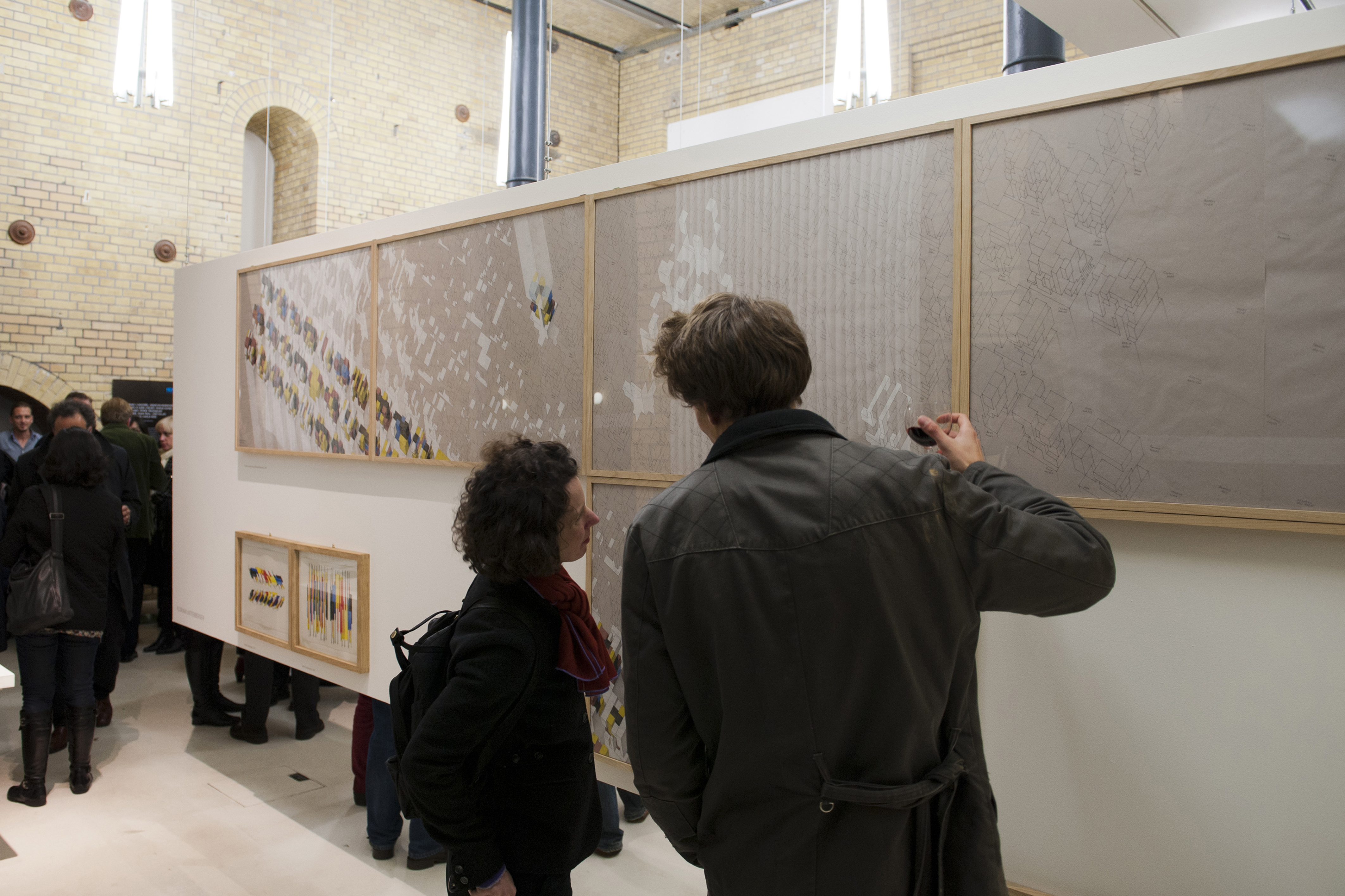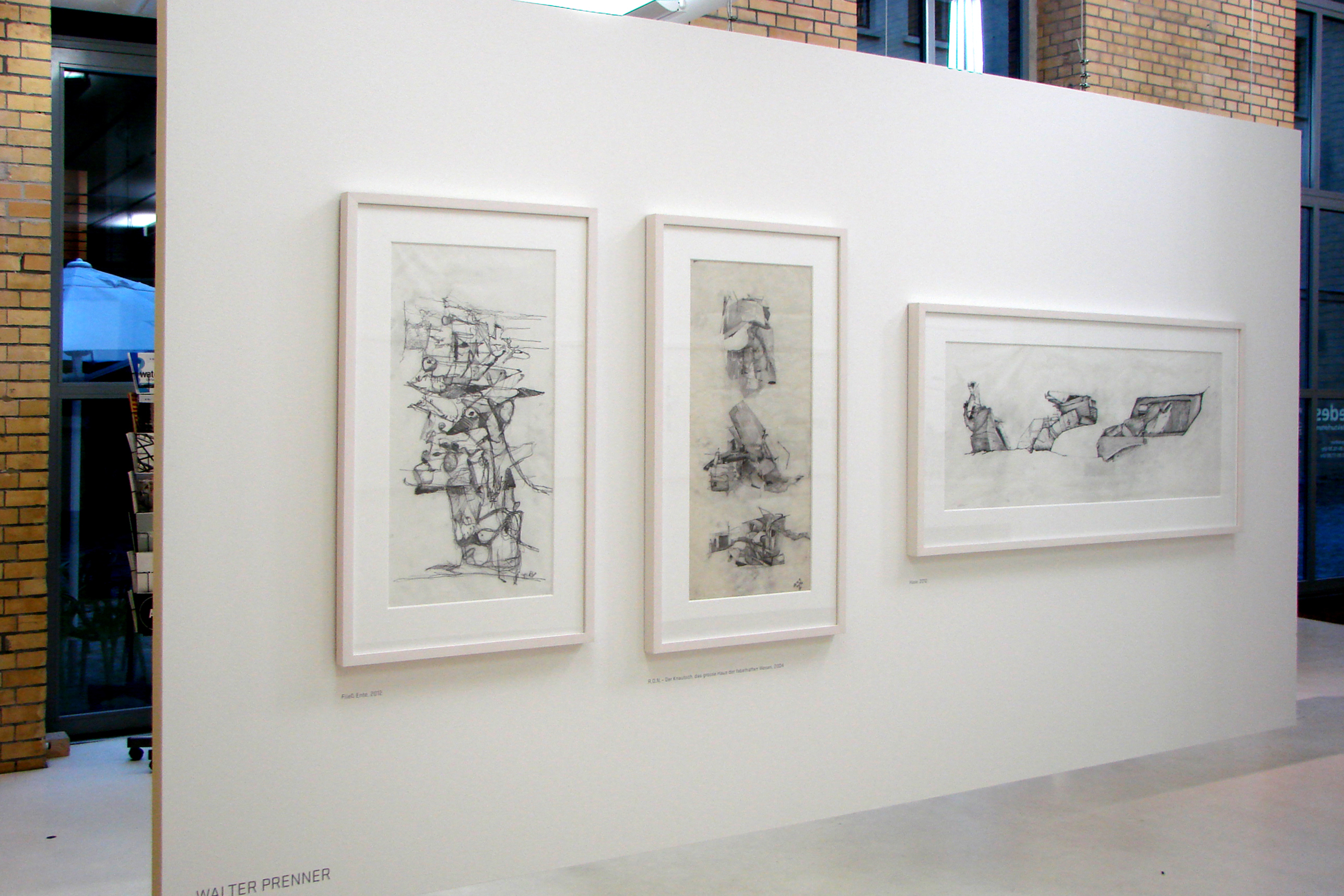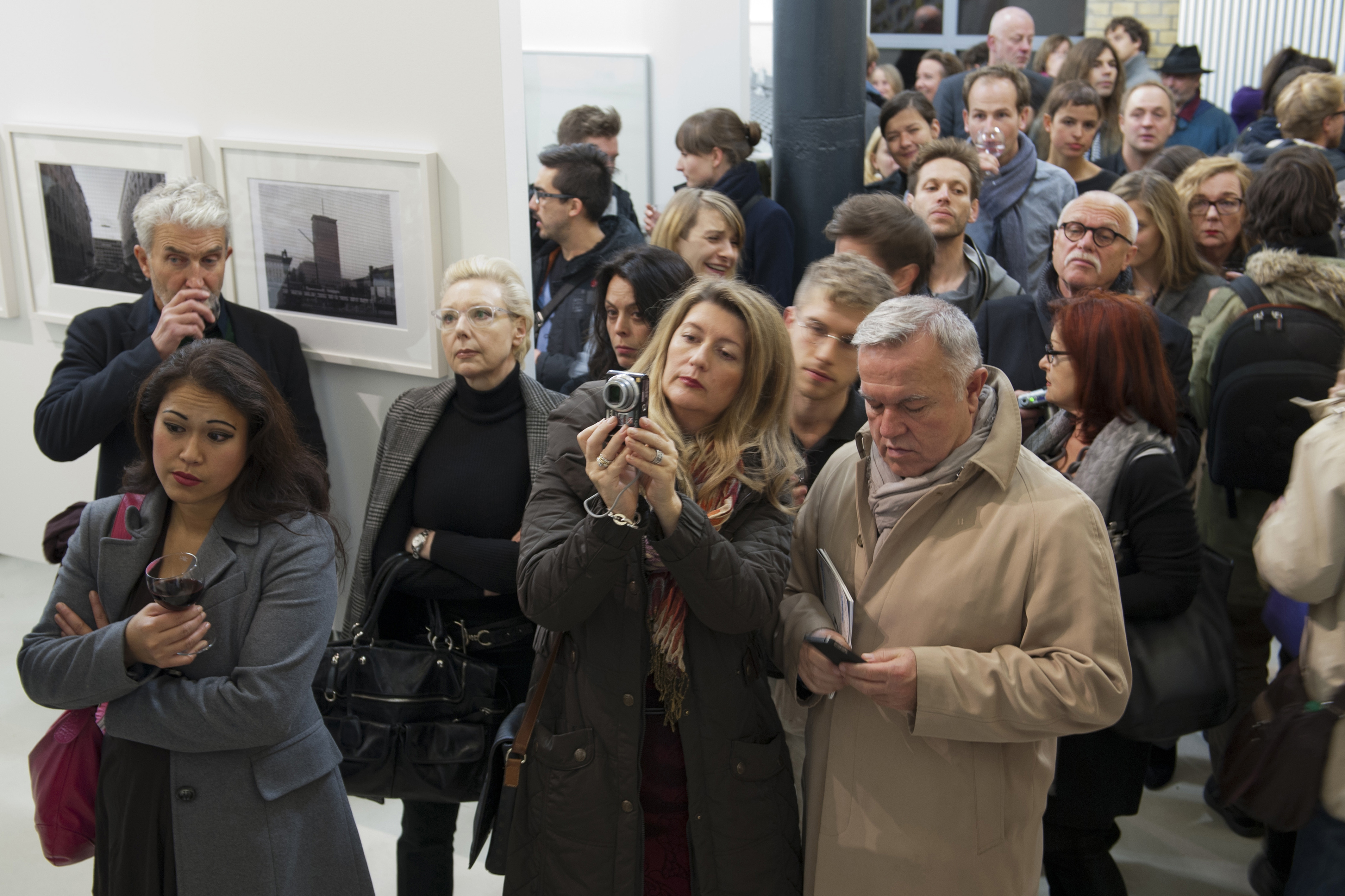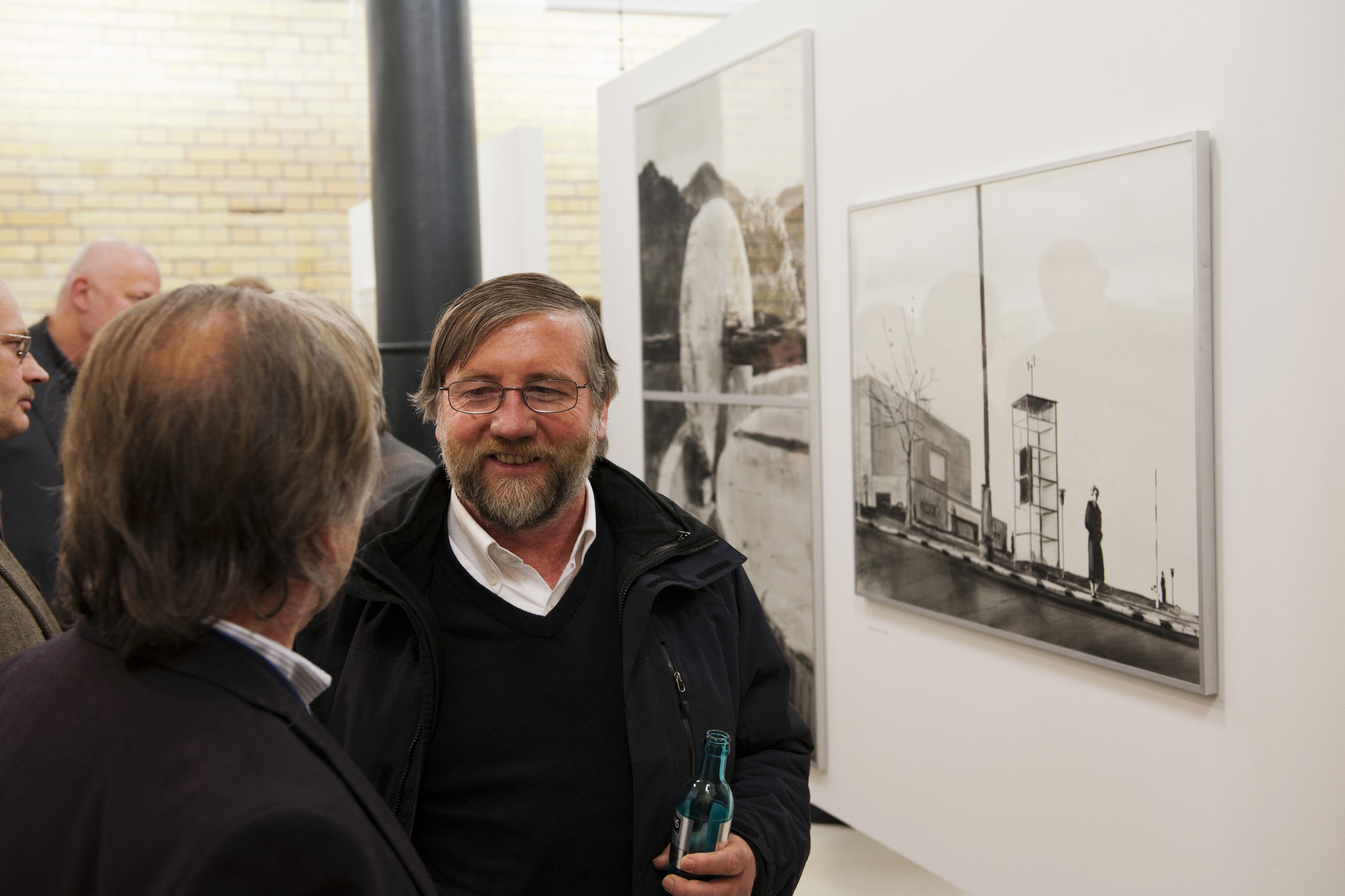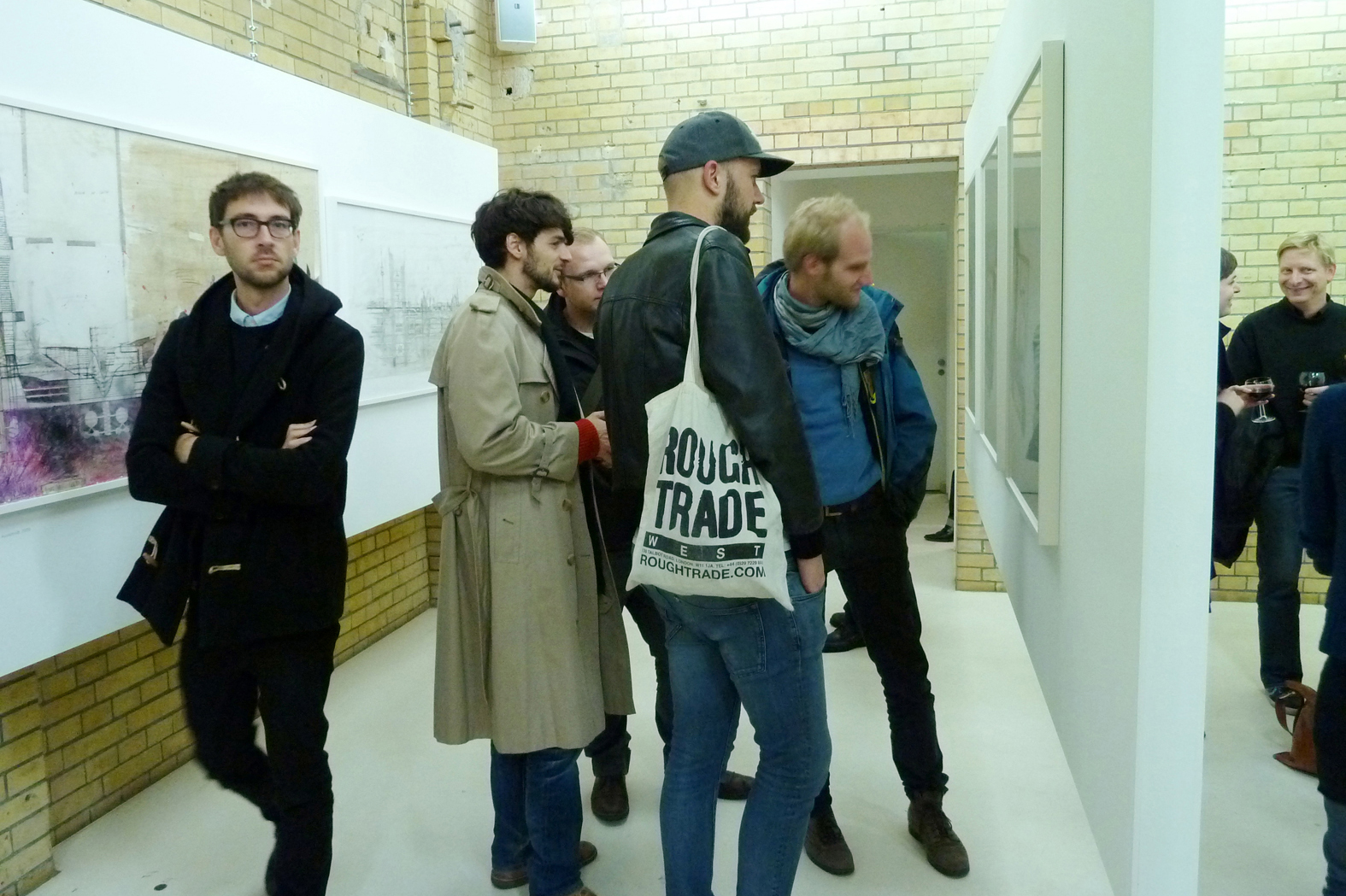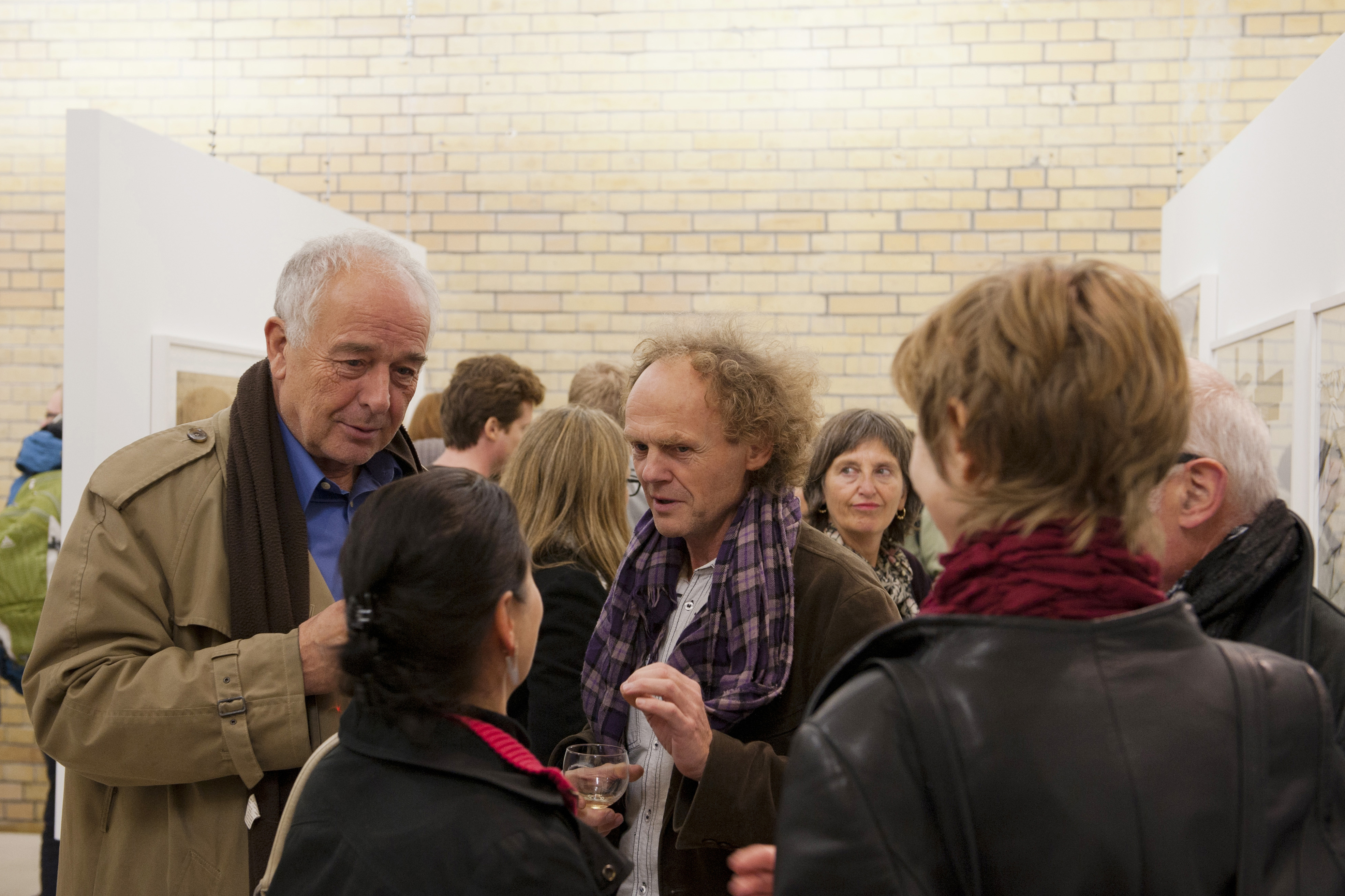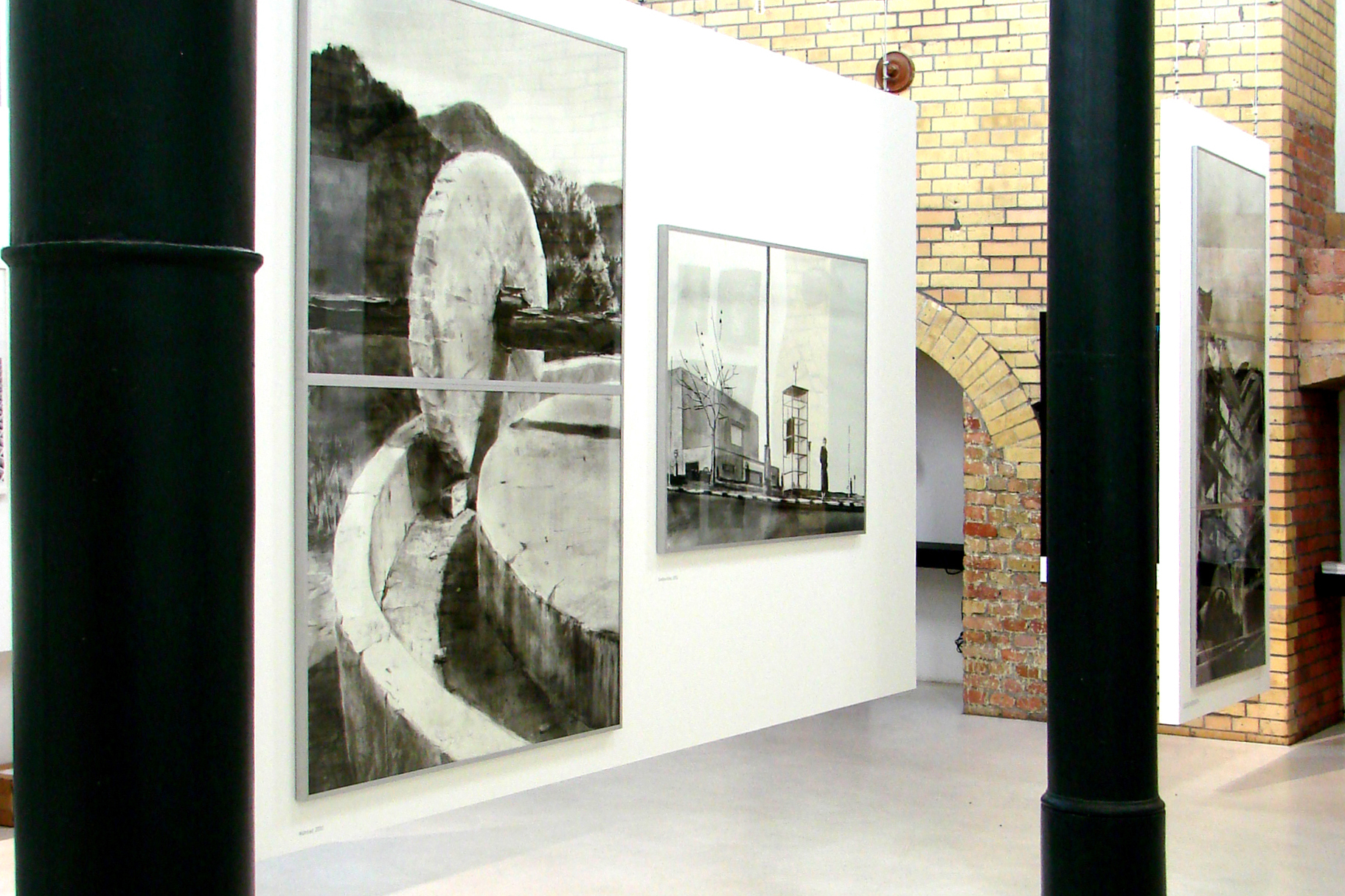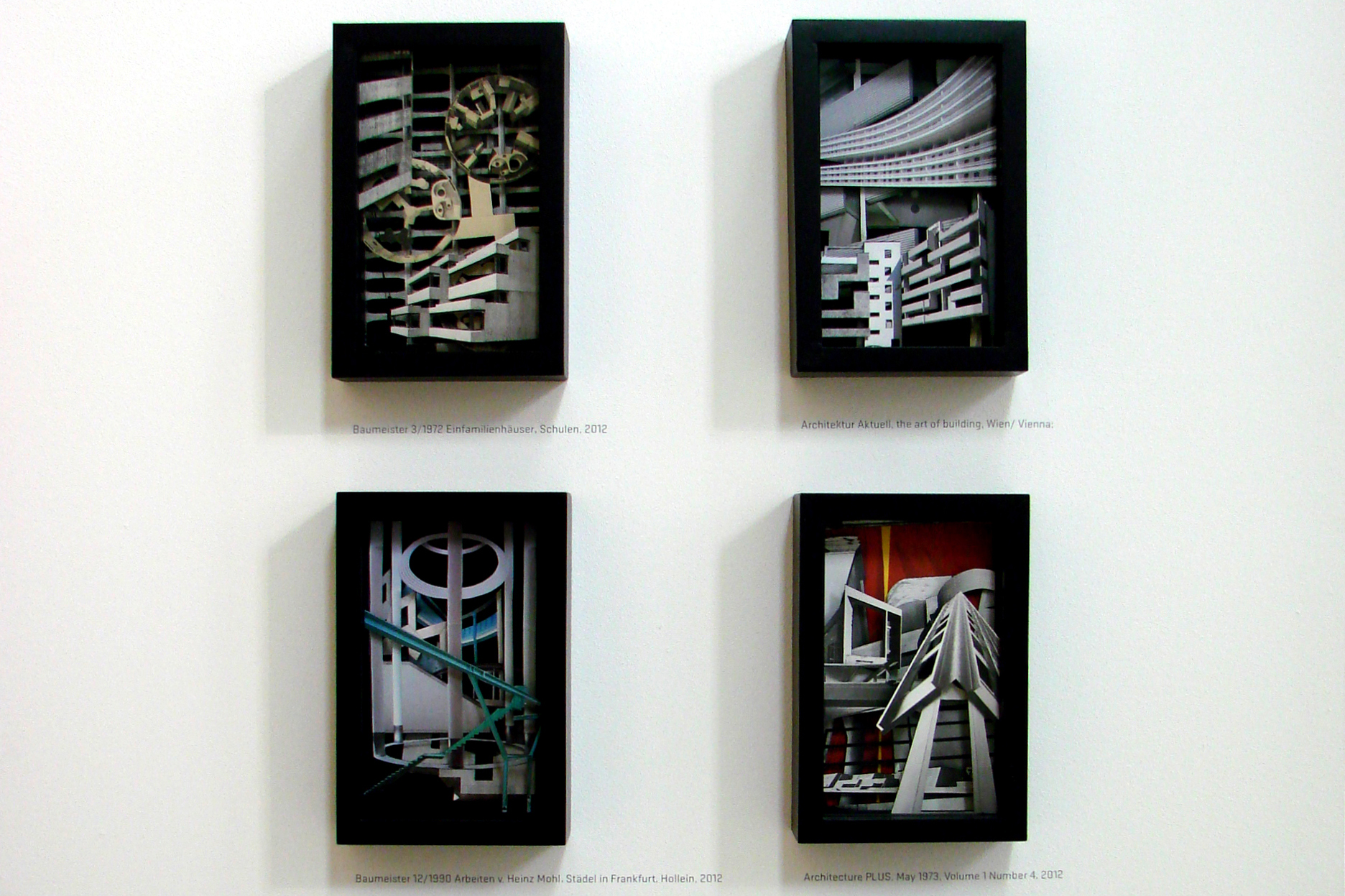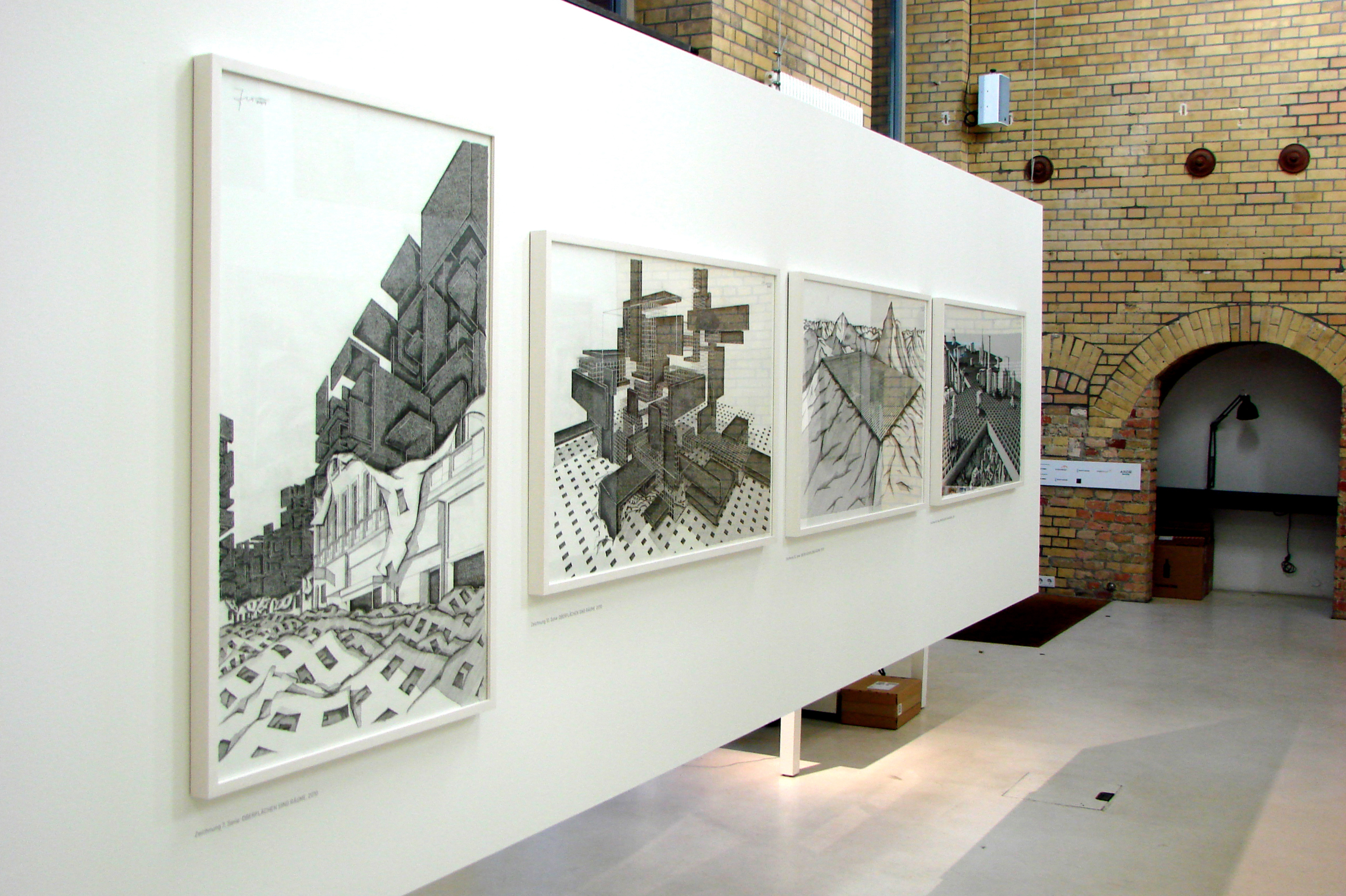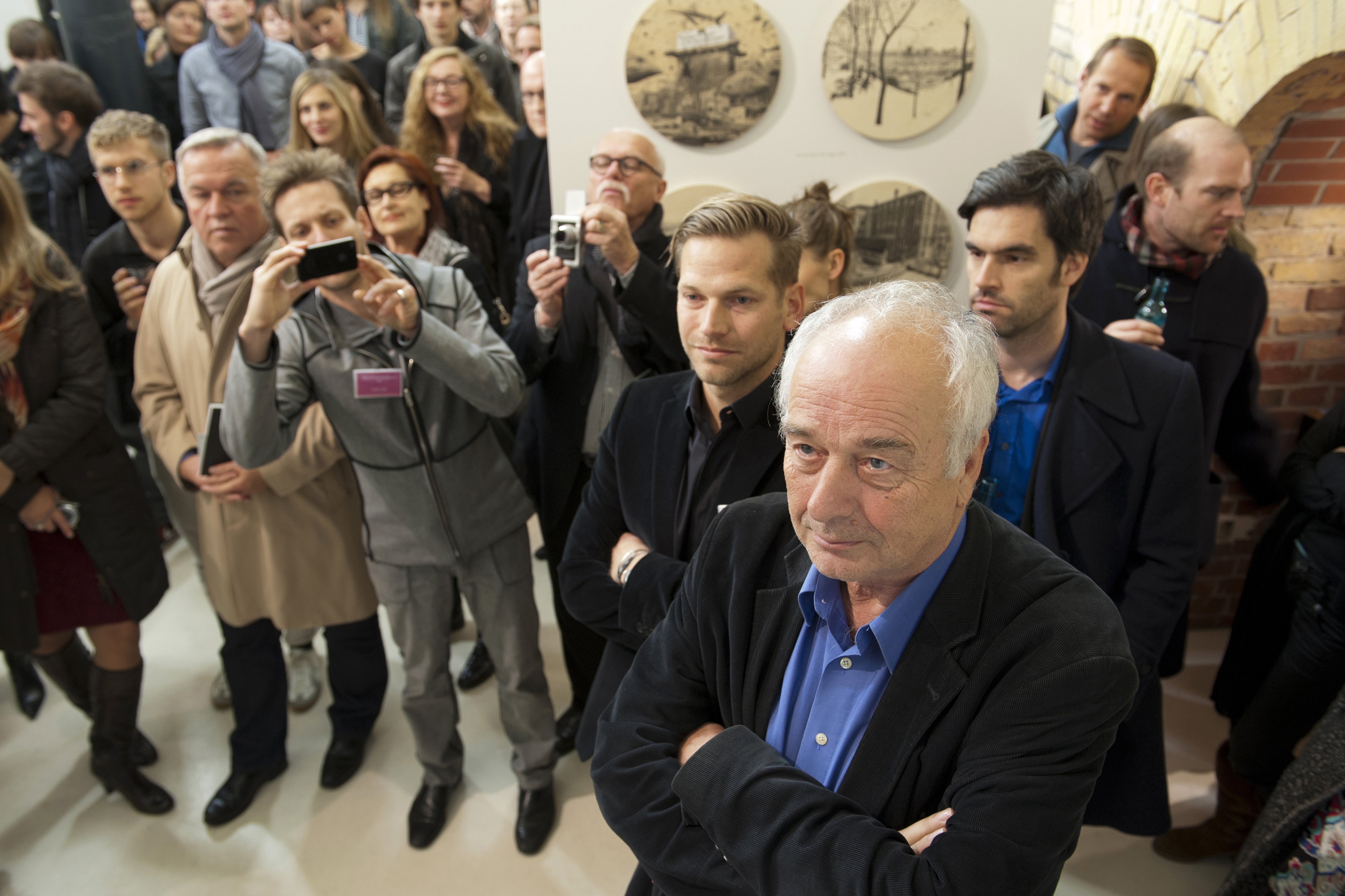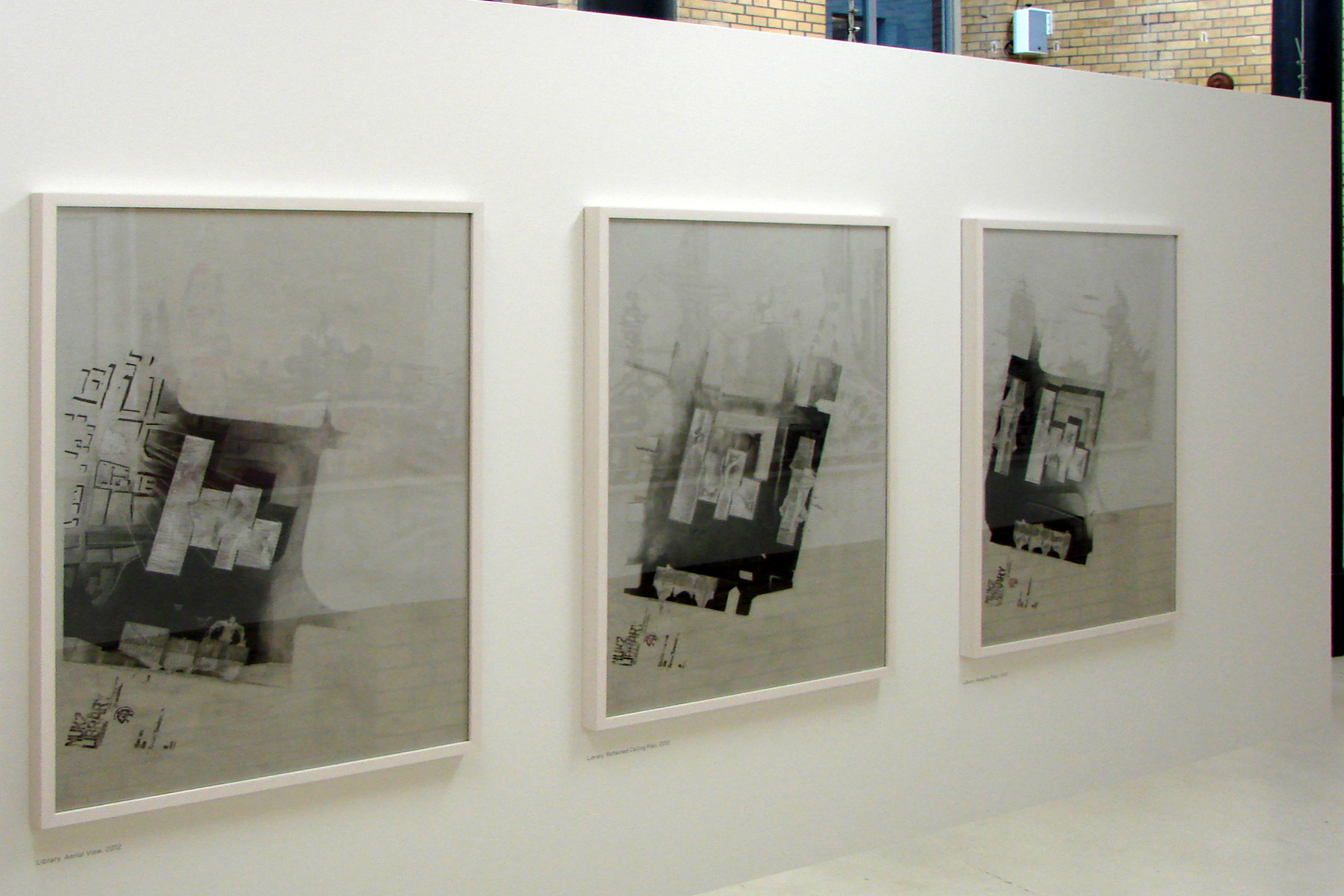The exhibition "Zeichnen“ curated by Dieter Ronte and Florian Medicus of NEW FRONTIERS, Verein zur Förderung experimenteller Architektur (Society for the Promotion of Experimental Architecture), features a selection of recent architectural drawings from Austria which form the basis for critical reflections on digital and virtual planning processes, as well as on the artistic conditions of architectural production. The greater portion of the exhibited works were produced in the context of an Austria-wide competition, and the selection provides a high-quality overview of drawing and of "work on space" as such.
According to an assessment by Wikipedia, the current generation of young practicing architects no longer consists of "digital immigrants"; its members must already be classified instead as "digital natives." The advent and triumph of digital planning and production tools has permanently transformed the thought and practice of architecture. Reappearing nonetheless and circulating throughout discussions of architecture, particularly in recent years (i.e. as a strategy designed to elude production pressure or self-limiting standards and conventions) have been a multiplicity of hand drawings, sketches, diagrams, and heartily slipshod study models. And we regard this trend as a source of celebration, because expressed in these modes of presentation is nothing less than a heightened desire to communicate once again, to render one's own activities comprehensible on an accessible and in the end manual level.
At this point, it would be naïve to break our anti-digital lances in favor of an architectural romanticism (and what could this actually be?), for the progressive promise of a virtual reality has already generated a factual reality, one that has unquestionably not only made it possible to conceptualize the formerly inconceivable, but in many instances to render it buildable as well. In any event, we are devoting serious thought to the ways in which the fascination of the digital has taken on a life of its own, and are currently examining the question: What form might a critical reception or artistic corrective of this state of affairs take? In the framework of the exhibition series "NEW FRONTIERS Zeichnen," we seek neither to give vent to our disapprobation of "Freudian prosthetic gods," nor to pronounce a manual restoration in the sense of enlightened authorship, and perhaps of the concept of the work. In any event, the highpoint of avant-garde provocation via the digital procedures so intimately associated with the "New Economy" has already passed, yet the question remains: What is next?
In recent years, then, the magic of the virtual has become aesthetically obsolete, and to a large extent commercially discredited as well: in the end, a distinctive, unmistakable, and passionate intensity cannot be programmed via shortcuts, no matter how complex the algorithm utilized. This is the main reason, we believe, for the tremendous interest manifested by the public recently in international competitions in architectural drawing, for example those of the Henning Larsen Foundation and the Woodbury University in California.
Alongside the participants Lukas Göbl, Markus Leixner, Constantin Luser, Josef Saller, and Florian Unterberger, who were invited in advance, the exhibition NEW FRONTIERS Zeichnen/Drawing features eight additional positions which were discovered through an Austria-wide competition (juried by Lilli Hollein, Dieter Ronte, Günter Zamp Kelp, and Florian Medicus). We are delighted to have identified eight additional "digital natives" from the younger generation (i.e. 45 or younger), namely Dietmar Franz, Sebastian Heinemeyer, Lucas Horvath, Claudia Larcher, Patrick Pregesbauer, Walter Prenner, Franz Riedl, and Nicole Wogg, who have quite deliberately begun in their daily work to execute drawings by hand or to combine manual and digital forms of expression with one another in ways that seem perfectly self-evident, yet at the same time highly provocative.
"The future of aesthetic possibilities lies in the past," wrote Hanno Rauterberg in late 2004, only to assert eight years later that: "The further life glides into the realm of the digital, the more pods and pads are disseminated, the more everything is touched upon lightly, never really grasped, the more people feel a growing need for the here-and-now." (DIE ZEIT, 2/2012) And it is precisely in the here-and-now that the exhibition NEW FRONTIERS Zeichnen intends first of all to explore the field of tension of spatial reflection and production in terms of its basis in the visual arts, and second of all to pose the most urgent questions concerning the fundamental process conditions of art and architecture in Europe in 2012.
Florian Medicus, 2012
Catalogue
An Aedes catalogue was published.
With a text by Florian Medicus
ISBN 978-3-943615-06-7
German/English
Price € 10,-
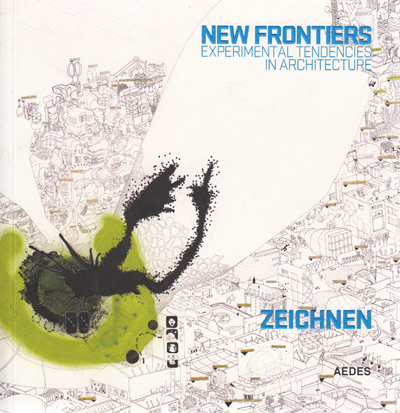
Sponsors
bm:ukk – österreichisches Bundesministerium für Unterricht, Kunst und Kultur, Alpine Bau GmbH, Wirtschaftskammer Österreich (go international), Fundermax, Kulturabteilung der NÖ Landesregierung, Scopus Capital, Zumtobel, carpetconcept, Busch-Jaeger, AXOR Hansgrohe
Diese Ausstellung wurde ermöglicht mit der großzügigen Unterstützung von:
